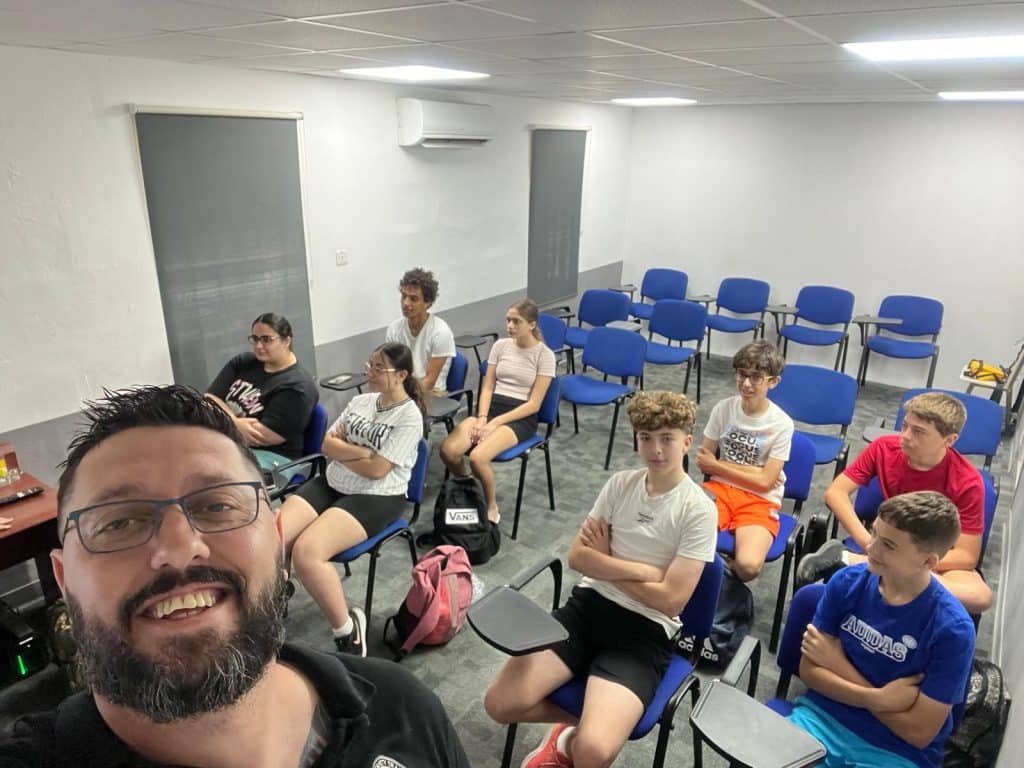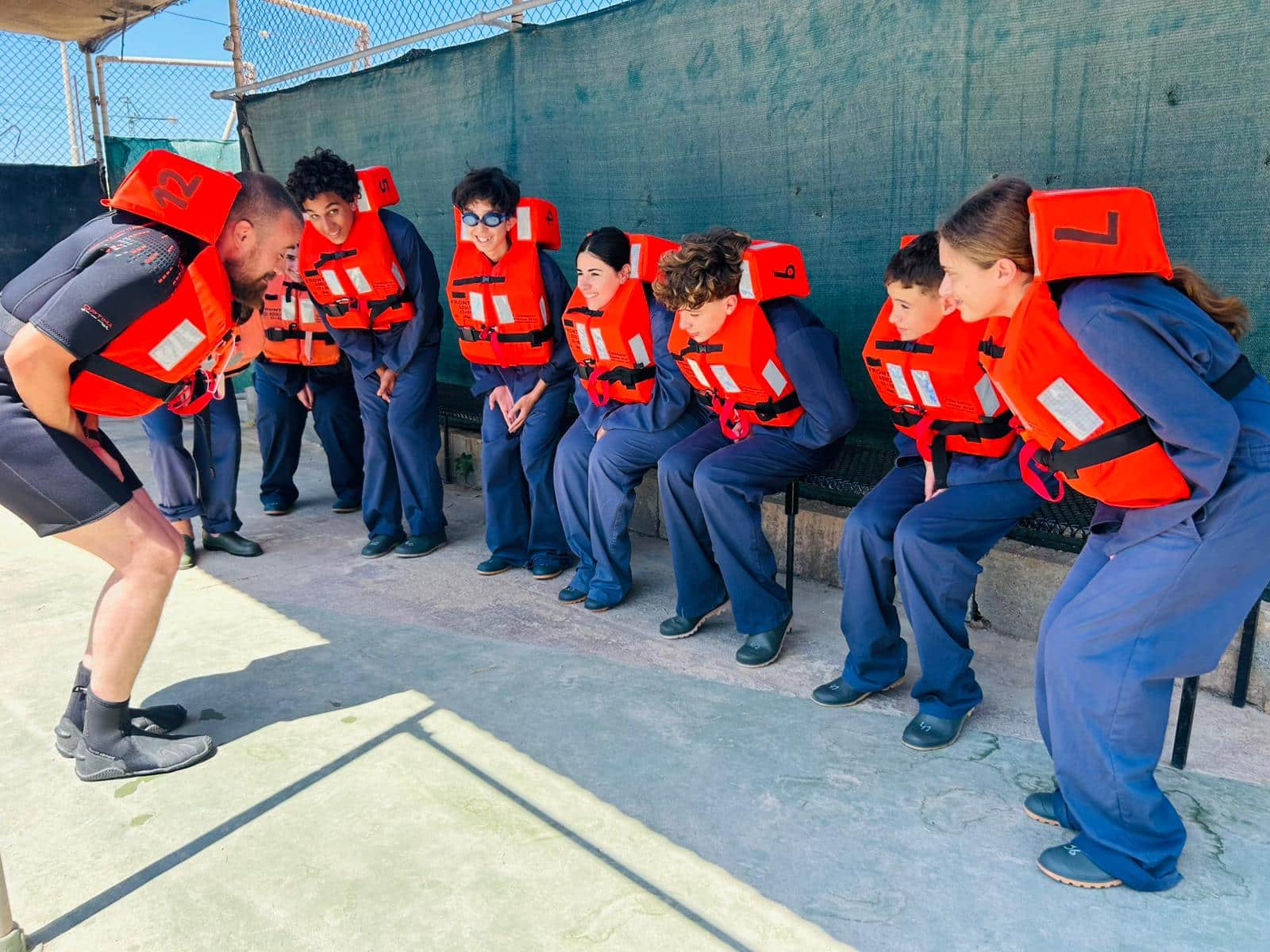
Investing in future generations means creating opportunities for them to engage with real-world challenges and solutions. Under the umbrella of the Malta ESG Alliance — where our sister company Alberta is a board member — the students from the Consultative Council for Future Generations were given a unique opportunity to step beyond the classroom and into the heart of industry.
Their visit began at Alberta, where they explored the latest fire and security technologies and gained insight into the systems that protect people, property, and the environment.
The learning continued at ISTC, where the students took part in an interactive, hands-on safety training session as a powerful introduction to emergency preparedness. To capture the impact of the experience, two students from the Consultative Council for Future Generations shared their reflections on their time at ISTC.
” The safety training at ISTC Malta taught me firefighting, aircraft evacuation, and sea survival techniques through hands-on activities.
We started at 8:30am by filling out some forms regarding safety and protocols, before moving to our first session. After a presentation about firefighting, presented to us by an actual firefighter, we got to wear real firefighting gear and practice using different extinguishers to put out fires. The PPE made me appreciate how difficult firefighting actually is. Feeling the heat and weight of the gear gave me a whole new respect for firefighters.
The aircraft evacuation drill was surprisingly intense. Wearing smoke hoods, we entered an aircraft cabin, which was later filled with thick synthetic smoke where we could barely see our hands in front of us. Crawling on our knees while holding hands with the person in front of us and the person behind us showed me how challenging a real emergency evacuation would be. It was way harder than it looked, and I realised how important it is to stay focused and not panic, and working as a team.
After a quick water break, we changed into survival suits for the survival techniques at sea. We learnt how to properly jump into water—keeping your body straight while protecting your nose and mouth. In the pool, we used the HELP position to conserve body heat and also learned that swimming backwards is actually the best technique when wearing a life jacket. It felt strange at first, but it made swimming a lot easier.
The partner rescue exercises were both fun and challenging. Taking turns playing both rescuer and victim, we practiced towing techniques. Forming group huddles to preserve body heat showed how teamwork can be crucial in survival situations.
One of the most memorable parts was when we all climbed onto a dinghy that looked like a floating tent in the pool. Climbing onto the dinghy was surprisingly tough, especially with the survival suit on. We camped there for two minutes to rest. Then we all jumped back into the water and formed another huddle. It was a fun little break in the middle of all the action.
The helicopter winch rescue was definitely the most exciting part. Being lifted from the water in a rescue harness gave me a real appreciation for how these operations work in actual emergencies. It was something I never thought I’d get to try.
At the end of the training, we had delicious food in the canteen, which was a great way to refuel after all the training. After we ate, we received certificates and had time to reflect on everything we’d learned. What impressed me most was how the hands-on approach made all the safety procedures feel real and memorable. I now feel much more confident about how to react in emergency situations. This training wasn’t just informative – it was genuinely enjoyable and something I’ll never forget.
Matteo Emanuele Camilleri – Student from the Consultative Council for Future Generations (MESGA)
Matteo’s reflections were echoed by Giuseppe, who also shared his perspective on the experience:
“Our day began in a very welcoming and professional environment. As soon as we entered the air-conditioned restaurant, we were greeted warmly by the instructors. To start the session, we were asked to fill out a few important forms. These were to ensure safety and administrative purposes, ensuring that all participants were aware of the protocols and procedures for the day.
Once the formalities were completed, we began a lesson, which was an introduction to basic fire safety. The instructors gave us informative briefing on how to properly use fire extinguishers and the importance of PPE, Personal Protective Equipment. They also discussed general fire safety tips, emphasizing the significance of remaining calm and making the right decisions during emergencies.
After the briefing, we were each handed a set of PPES that matched our individual sizes. It was reassuring to see that the equipment was thoroughly cleaned and well-maintained. Once we had our gear on, we moved on to our first practical exercise: learning how to use different types of fire extinguishers. We were taught the correct procedure step-by-step: first raise the alarm, choose the right type of fire extinguisher based on the fire, use the extinguisher till it is empty and finally, place the used extinguisher on the ground in a horizontal position before evacuating.
Next, we were trained on how to correctly wear and use a gas mask. This was essential for the following simulation, where we entered a mock aircraft cabin filled with that when we entered and everyone was sited artificial smoke started to come out. This exercise was done to replicate a real-life emergency scenario inside an airplane. Using our training, we successfully wore the training gas mask navigated the smoky cabin and evacuated safely, relying on our senses and the guidance we had received.
After this, we changed into a different set of PPES for water-based training. We proceeded to a large pool, where we learned how to survive in cold water. Each one of us was given a life jacket, and we practiced techniques for conserving body heat and staying afloat. We also learned how to position ourselves to be easily seen by rescuers, such as those in helicopters or rescue boats. Then, we simulated boarding a marine hovercraft safely, followed by practicing being rescued by a helicopter.
The training concluded by taking a shower and changing back into our regular clothes. We then gathered for lunch, which was delicious.
Overall, the experience was not only educational but also very engaging. It provided hands-on training that could prove crucial in real-life emergencies. The instructors were professional, the facilities were excellent, and I left the training feeling much more confident in my ability to handle emergency situations safely and effectively.“
Giuseppe Saliba – Student from the Consultative Council for Future Generations (MESGA)
About MESGA
The Malta ESG Alliance (MESGA) is a collaborative platform that brings together forward-thinking businesses committed to driving sustainable progress through Environmental, Social, and Governance (ESG) principles. Among its board members is our sister company Alberta. Through initiatives like the Consultative Council for Future Generations, MESGA promotes cross-generational dialogue and action, empowering youth to contribute meaningfully to Malta’s sustainable future.
About the Consultative Council for Future Generations (CCfFG)
The Consultative Council for Future Generations (CCfFG) is a youth-led body formed under MESGA, composed of bright young students committed to contributing to Malta’s sustainable future. Through hands-on experiences and direct engagement with businesses like Alberta and ISTC, the council plays a vital role in bridging today’s leadership with tomorrow’s voices — ensuring that younger generations are included in national conversations on sustainability, safety, and innovation.
